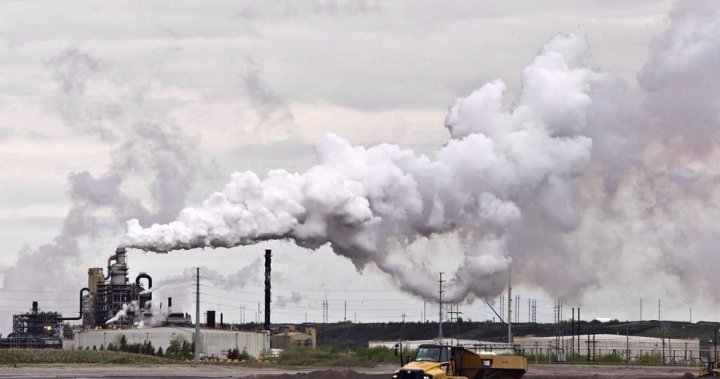Canada witnessed its first year-over-year decrease in greenhouse gas emissions since the onset of the COVID-19 pandemic, marking a significant, albeit modest, step towards its climate goals. A preliminary report released by the federal government revealed a reduction of six million tonnes of greenhouse gases in 2023 compared to 2022. This decrease equates to the annual emissions of approximately 1.4 million passenger vehicles, showcasing a positive shift in the country’s emissions trajectory. However, the progress remains insufficient to meet Canada’s ambitious 2030 target, which necessitates a reduction of greenhouse gas emissions to 40-45% below 2005 levels. As of 2023, emissions have only decreased by 8.5%, highlighting the significant work that lies ahead. The early release of this summary report, a departure from the usual April publication aligned with UN submissions, reflects the growing scrutiny of the government’s climate actions.
The government has attributed this reduction to the effectiveness of its climate plan, emphasizing the collaborative efforts of Canadians across the country. Environment Minister Steven Guilbeault lauded the achievement, highlighting the simultaneous decline in pollution and growth in the economy. He credited the government’s support for job-creating industries and initiatives that offer cost savings to Canadians as contributing factors to this progress. The 2023 emissions level of 694 million tonnes of carbon dioxide equivalent matches the figures from 2021, a year still heavily impacted by COVID-19 restrictions. This suggests that while progress has been made, a portion of the reduction can be attributed to pandemic-related factors. Furthermore, the report includes revisions to previous years’ data, a standard practice reflecting advancements in pollution measurement techniques. These revisions refine the 2030 target, now requiring emissions to be no more than 455 million tonnes to achieve the stated goal.
While the government celebrates this reduction as a positive sign, critics, including Green Party Leader Elizabeth May, acknowledge its limited impact. May recognizes the role of carbon pricing in contributing to the emissions decline, marking the first demonstrable impact of a specific policy instrument. However, she emphasizes the inadequacy of this progress in relation to the overall target. The modest reduction achieved thus far pales in comparison to the drastic changes needed to meet Canada’s ambitious climate commitments. This underscores the need for more robust and impactful policies to accelerate emissions reductions.
The breakdown of emissions sources reveals a nuanced picture. While transportation-related emissions experienced a slight increase in 2023, this was counterbalanced by decreases in emissions from the oil and gas sector, agriculture, and buildings. This highlights the complex interplay between different sectors and the need for targeted interventions in each area. The observed decline in emissions from the oil and gas sector, a traditionally significant contributor to Canada’s carbon footprint, suggests some progress in transitioning towards cleaner energy sources. Similarly, reductions in emissions from agriculture and buildings reflect positive changes in practices and technologies within these sectors.
The report’s findings align with a recent assessment by federal Environment Commissioner Jerry DeMarco, which concluded that Canada remains off track to meet its Paris Agreement commitments. This assessment, however, predates the government’s newly drafted regulations for the oil and gas sector. These regulations, though not yet in effect, are scheduled for implementation in 2026, after the next federal election. Their impact on future emissions remains to be seen. This underscores the ongoing challenge of balancing economic growth with environmental responsibility, a complex equation that requires careful consideration of both short-term and long-term implications.
The preliminary report presents a mixed bag for Canada’s climate action. While the first post-pandemic emissions reduction is a positive step, it is far from sufficient to achieve the country’s 2030 target. The progress highlights the impact of existing policies, like carbon pricing, while simultaneously exposing the need for more aggressive and comprehensive measures. The diverse changes in emissions across various sectors emphasize the necessity for tailored approaches. The upcoming oil and gas regulations represent a potential turning point, but their effectiveness remains to be evaluated. Ultimately, the road to achieving Canada’s climate goals demands sustained commitment, innovation, and collaboration across all sectors of society. The modest victory of 2023 serves as both a source of encouragement and a stark reminder of the magnitude of the challenge ahead.

